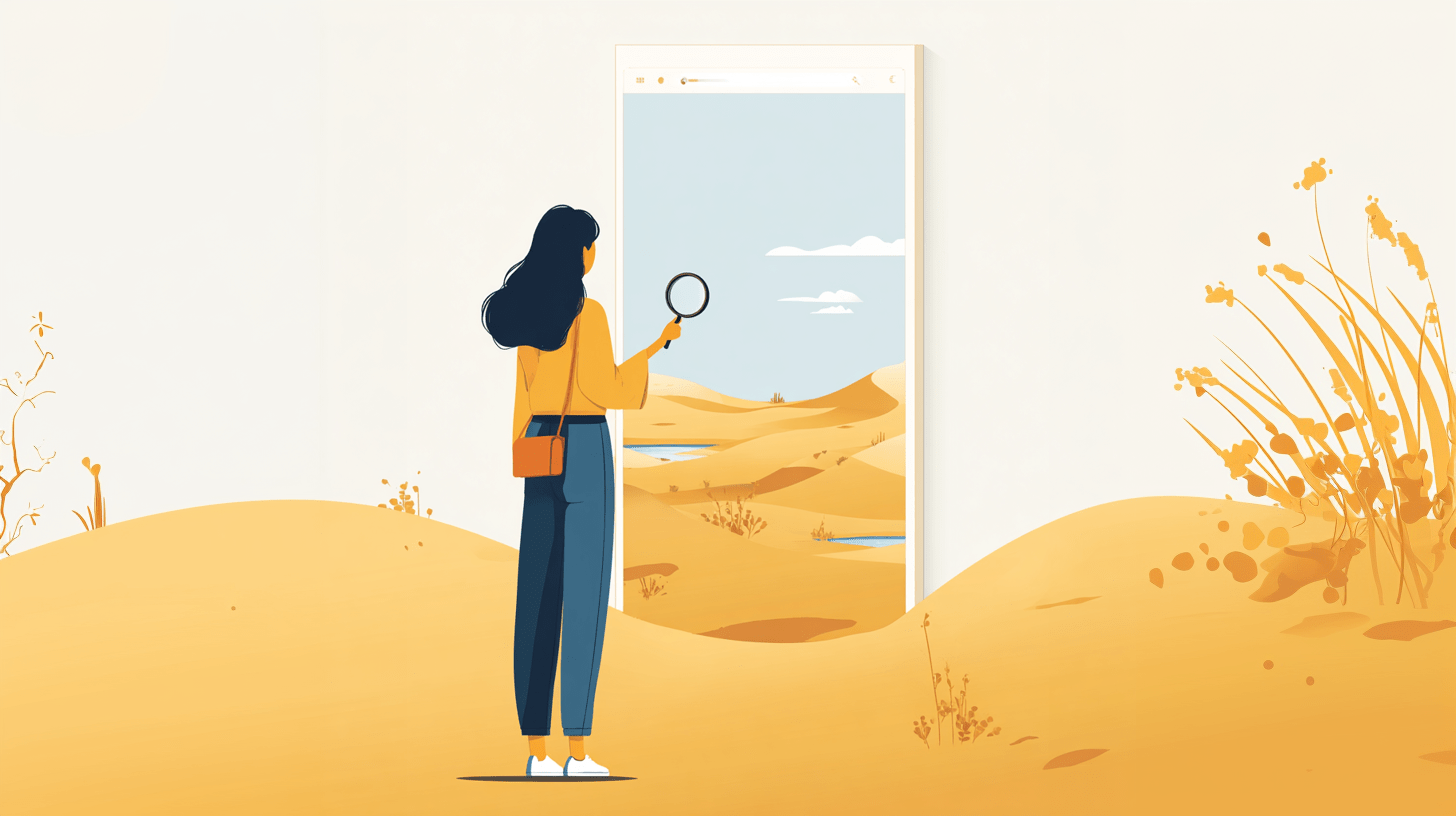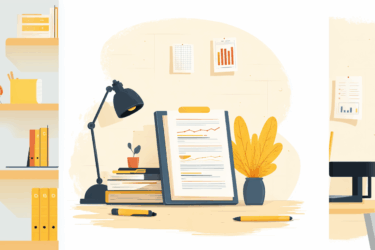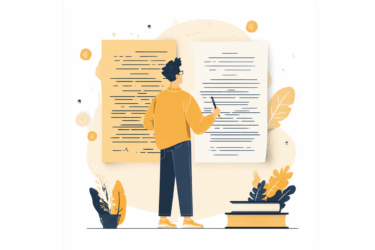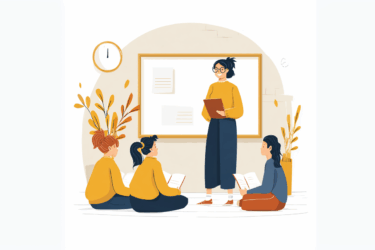It is no secret that plagiarism, academic integrity, and AI assistance have become some of the most discussed issues in the modern world. Today, learners and researchers can enjoy all the benefits of such assistants, but at the same time, they still need to submit 100% original work. This is where tools like an AI detector or an AI grammar checker hit the scene, as they help experts assess your work and see if you are the real author.
We are used to the idea that plagiarism is mostly about writing, but actually, this is a much larger issue, and visuals can also be affected by this problem. In this article, we will talk about image plagiarism, discuss the most effective techniques for finding stolen images, pay attention to some outdated and weak methods that don’t work well, and finally, provide you with the most effective tips for preventing the issue. Whether you want to protect your copyright or are just wondering how to make sure no one uses your work without permission, this guide is for you!
Why Stolen Images Matter
In today’s digital world, images travel faster than ever. With a single click, your carefully crafted graphic can appear on someone else’s website, social media profile, or any other online source, and in most cases, this will happen without your consent. Actually, this isn’t just an annoyance; it’s a problem with real consequences.
- Financial issues. Photographers and businesses often lose licensing fees when their work is reused without credit.
- Brand blurring. When your visual is copied by a fraudster, for example, your customers may associate you with poor quality.
- Legal issues. Image theft can result in disputes, takedown requests, and, in severe cases, even lawsuits.
Many people want to know how to reverse image search so they can track down instances of unauthorized use, but they don’t know where to begin. Whether you’re a student who’s posted artwork online, a business with branded visuals, or a photographer who wants to protect their portfolio, you have to know how to find stolen images, and in this article, we will give you the answers you need.
The Powerful Techniques: 7 Methods That Work
Today, there are many ways to track stolen content; one can use an AI plagiarism checker for text files and some other tools to track images. Below, you will find seven techniques that we have highlighted because they stand out for their effectiveness and practicality.
Google Images & Google Lens
When people wonder how to do a reverse image search, Google Images is usually their first stop, as this technique is also known as the classic image search. You simply need to upload your image to Google Images, and the search engine will match the visual patterns provided against billions of indexed pictures. Well, this is a perfect first sweep for finding obvious duplicates, but uploading a clear version of your image is essential.
How it works
- Go to images.google.com.
- Click the camera icon.
- Upload your photo.
- Review any visually similar images and the pages that include them.
✅ It is free, quick, and widely indexed.
❌ The tool often struggles with cropped or edited versions. Thus, try uploading cropped sections if the whole image yields no results.
TinEye
TinEye is a dedicated reverse image lookup service that specializes in finding resized or cropped versions of images. The tool will create a digital fingerprint of your photo and look for matches. If you want to track even edited versions of your visual, such as images that have been resized or modified with filters, this is the best helper for your needs.
How it works
- Go to tineye.com.
- Upload your image.
- Sort results by “Best Match” or “Most Changed.”
✅ It is a great alternative for finding altered images, and it shows a usage timeline.
❌ The tool has a smaller index than Google, and the complete list of features requires a subscription.
Alternative search engines
Not all search engines crawl the same spaces. Bing, for example, is a tool that’s similar to Google, but with different coverage and a visually oriented approach. So, when Google and TinEye come up empty, you should definitely try this alternative.
How it works
- Go to bing.com/images.
- Upload your photo.
- Explore the visually similar matches.
✅ It can help you expand your search’s reach.
❌ The results vary by region.
Social media searches
Sometimes, stolen images circulate mainly on social media platforms. While Instagram and Facebook don’t offer full reverse image search tools, there are workarounds. You can use Pinterest Lens, Instagram search with keywords or hashtags, and perform manual checking. In this case, you may need platform access, an account, and related hashtags.
How it works
- On Pinterest, upload your photo and see related pins.
- On Instagram, search hashtags linked to your brand.
- On TikTok, search for trending hashtags where your image might appear.
✅ This technique can help you catch reposts where they’re most likely.
❌ This method is pretty time-consuming, and you won’t be able to see matches that appear in private accounts.
Perceptual hashing
For the technically curious, perceptual hashing offers a powerful method for detecting even heavily altered versions of an image. The tool generates a hash (unique “fingerprint”) of the image based on its visual features and detects images with similar hashes. In this case, even images that have been resized, cropped, or filtered can be easily detected, but you will need some basic coding knowledge or access to open-source tools.
How it works
- Install pHash or ImageMagick.
- Generate hashes of original images.
- Compare these hashes against the dataset.
✅ The tool is robust against edits.
❌ You will require technical skills.
Image forensics
Beyond searching, forensic tools help confirm originality and edits. Tools like FotoForensics analyze compression levels (Error Level Analysis), and EXIF readers show metadata like camera model, location, and timestamp. This is a perfect technique for proving ownership and showing when an image was first captured.
How it works
- Upload an image to FotoForensics.
- Run an EXIF data check with free readers.
- Save the reports for evidence.
✅ It is valuable in disputes or takedowns.
❌ Many sites strip EXIF metadata.
Professional monitoring
If stolen images are a recurring problem, services like Pixsy or ImageRights can help. You can upload your portfolio, and the service will scan the web. Some platforms even send takedown notices automatically. Just keep in mind that you will need a subscription or a commission-based payment.
✅ This is a legally supported tool.
❌ It is paid, so it may not be affordable for everyone, especially if you only need it to deal with occasional theft.
Weak Techniques to Avoid
When searching for stolen images, it’s tempting to try quick fixes, but not all methods are effective. Some of them are just outdated or unreliable. We have gathered some weak techniques that you should be aware of not to waste your time and effort on something that does not work; instead, focus on methods that actually give results.
👎 Filename search
Searching for a visual by its filename may seem logical, but it rarely works. Websites usually rename files automatically or compress them into different formats. Even if the original filename is unique, platforms are more than likely to alter it.
👎 Text-only search
Searching by descriptions such as “dog running in a park” can offer hundreds of results, but rarely the exact stolen image. Thieves are pretty savvy users, rarely keeping the same text, and oftentimes, images circulate without consistent descriptions. A better approach is to combine descriptive keywords with reverse image lookup tools.
👎 Relying on thumbnails
Using small, low-resolution previews in searches can reduce accuracy. Conversely, reverse image search tools rely on details like textures, colors, and shapes to analyze images. Thumbnails usually strip away this information, leaving only vague outlines that confuse algorithms and produce irrelevant results. If possible, upload the highest-quality version of your photo you can; even a cropped but detailed section can work better than a tiny, blurry preview.
👎 Checking only one search engine
Many people rely solely on Google Images because they believe that it covers the entire internet. Of course, it is known as today’s most powerful tool, but remember that no single search engine indexes everything. Google and Bing often cover different sites; thus, it is much wiser to use different platforms at once in order to avoid incomplete results and catch image misuse across more platforms and regions.
👎 Trusting automated flags blindly
Platforms like e-commerce sites use automated systems to detect duplicate content, but these are far from foolproof. They sometimes misidentify innocent uploads as stolen, but at the same time, genuine instances of theft can slip through undetected. By relying solely on these systems, you risk facing false positives. Remember to always verify suspicious results with manual checks and reverse image search tools before taking action against possible copyright infringement.
Prevention Is a Key Tool for Avoiding Potential Issues
Finding stolen images is only part of the solution, but preventing theft is just as important. While no method guarantees full protection, smart practices can provide strong proof if disputes arise. These techniques are suitable for everyone, from hobbyists to professionals, and focus on balancing ease of use with effectiveness. Thus, think of prevention as a shield and monitoring as a net, remembering that you need both to protect your creative work.
✅ Use visible or semi-transparent watermarks
If you add a watermark, it is harder for thieves to present images as their own. Well, visible marks deter casual misuse, while semi-transparent ones protect without overwhelming the artwork. For example, you can use your logo, name, or website link as a watermark. This way, you will not only safeguard your image but also promote your brand if the image spreads online.
✅ Upload lower-resolution previews
Sharing reduced-size images can prevent high-quality theft. In this case, thieves can still copy your work, but these images will be less useful for commercial purposes like printing or resale, and you will be able to keep the high-resolution originals safe. This approach works well for portfolios, blogs, and online shops, where a preview is enough to showcase your work.
✅ Add copyright notices on your website
Simple text like “© Your Name, All Rights Reserved” reminds visitors that your content is legally protected. While it won’t stop determined thieves, it still strengthens your claim if any plagiarism disputes arise. Additionally, such copyright notices can educate casual users who may not realize that image copying without permission is against the law.
✅ Keep originals with EXIF intact for proof
EXIF data contains information such as the date, time, and camera details; this is your chance to provide solid proof of ownership. Even if thieves erase the metadata from stolen versions, you still have the original source. Backing up your EXIF-protected originals ensures you always have evidence to support your copyright.
When Your Visuals Are Live: Top Long-Term Monitoring Techniques
Prevention reduces theft, but ongoing monitoring ensures you can quickly detect misuse. Many cases of image theft occur months or even years after publication, so keeping watch is crucial. While advanced users usually benefit from professional platforms, if you are a beginner, you can start with simple free tools. Here are practical, beginner-friendly strategies for monitoring your images.
☝️ Set up Google Alerts for image-related text
Google Alerts can notify you when certain keywords, like your name, website, or brand, appear online. Unfortunately, it won’t catch visual theft directly, but it can help identify pages where your work might be being used without credit. For the best results, combine text alerts with regular reverse image search to cover both written and visual mentions.
☝️ Subscribe to Pixsy or ImageRights
These services specialize in image monitoring and enforcement and can scan the internet for matches to your work. These can notify you of possible theft and even assist in legal actions. These are great helpers for photographers and artists who don’t want to handle manual searches. These subscriptions can save a significant amount of time and effort on tracking, so do not neglect such an opportunity.
☝️ Build a personal pHash script if you’re technically inclined
As we have already mentioned, perceptual hashing creates a unique fingerprint of your image, and this can help you detect duplicates even when they’re altered. This approach is more advanced but highly effective for spotting even heavily edited versions of your visuals.
Bottom Line
Learning how to do reverse image search is now a vital skill. With the right tools, you can quickly spot cases of unauthorized use, protect your brand, and reclaim your work. The same technological world that gives us an essay grader or an essay topic generator to help assess our skills also has tools that can safeguard academic integrity. At the same time, we have access to a large number of powerful instruments to protect visual integrity, which has become a pretty common issue in the modern world. Just as students and professionals use these AI-driven systems to ensure originality in writing, businesses can use reverse image lookup methods to defend originality in visuals to make sure their rights are safeguarded.





